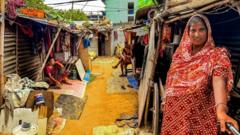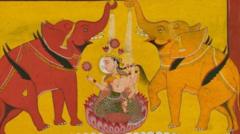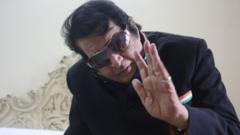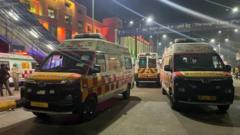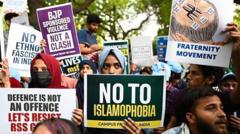The Maha Kumbh Mela, regarded as the world's largest religious festival, kicks off this week in Prayagraj, India, drawing hundreds of millions of pilgrims from around the globe. The event, occurring every 12 years at the sacred confluence of the Ganges and Yamuna rivers, is expected to welcome as many as 400 million participants over the next six weeks, surpassing the total population of the United States.
This grand celebration of Hinduism also serves as a stage for political demonstrations, especially regarding the rise of Hindu nationalism under the leadership of Prime Minister Narendra Modi. Authorities face significant logistical challenges to ensure safety and prevent overcrowding, a concern heightened by past incidents of stampedes.
The Maha Kumbh Mela, meaning "great festival of the sacred pitcher," is steeped in ancient legend, depicting the struggle between gods and demons for a pitcher containing the nectar of immortality. This historic observance focuses on a series of sacred baths believed to cleanse participants of their sins.
Amid colorful processions with vibrant clothing, music, and ceremonial weapons, devotees travel from across India and beyond to witness and partake in this profound event. The junction of the Ganges and Yamuna also symbolizes the mythical river Saraswati, further enriching the festival's spiritual significance.
This grand celebration of Hinduism also serves as a stage for political demonstrations, especially regarding the rise of Hindu nationalism under the leadership of Prime Minister Narendra Modi. Authorities face significant logistical challenges to ensure safety and prevent overcrowding, a concern heightened by past incidents of stampedes.
The Maha Kumbh Mela, meaning "great festival of the sacred pitcher," is steeped in ancient legend, depicting the struggle between gods and demons for a pitcher containing the nectar of immortality. This historic observance focuses on a series of sacred baths believed to cleanse participants of their sins.
Amid colorful processions with vibrant clothing, music, and ceremonial weapons, devotees travel from across India and beyond to witness and partake in this profound event. The junction of the Ganges and Yamuna also symbolizes the mythical river Saraswati, further enriching the festival's spiritual significance.








